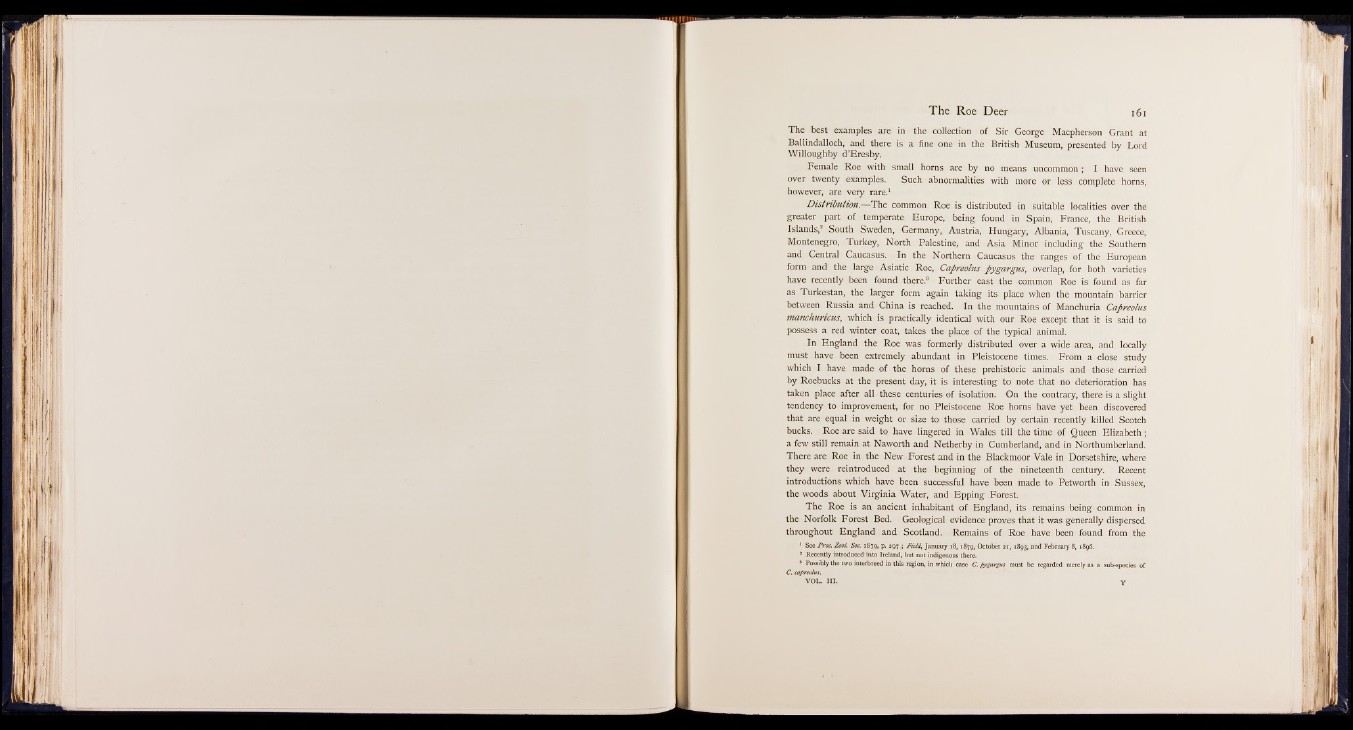
The best examples are in the collection of Sir George Macpherson Grant at
Ballindalloch, and there is a fine one in the British Museum, presented by Lord
Willoughby d’Eresby.
Female Roe with small horns are by no means uncommon; I have seen
over twenty examples. Such abnormalities with more or less complete horns,
however, are very rare.1
Distribution.— The common Roe is distributed in suitable localities over the
greater part of temperate Europe, being found in Spain, France, the British
Islands,2 South Sweden, Germany, Austria, Hungary, Albania, Tuscany, Greece,
Montenegro, Turkey, North Palestine, and Asia Minor including the Southern
and Central Caucasus. In the Northern Caucasus the ranges of the European
form and the large Asiatic Roe, Capreolus Pygargus, overlap, for both varieties
have recently been found there.8 Further east the common Roe is found as far
as Turkestan, the larger form again taking its place when the mountain barrier
between Russia and China is reached. In the mountains of Manchuria Capreolus
manchuricus, which is practically identical with our Roe except that it is said to
possess a red winter coat, takes the place of the typical animal.
In England the Roe was formerly distributed over a wide area, and locally
must have been extremely abundant in Pleistocene times. From a close study
which I have made of the horns of these prehistoric animals and those carried
by Roebucks at the present day, it is interesting to note that no deterioration has
taken place after all these centuries of isolation. On the contrary, there is a slight
tendency to improvement, for no Pleistocene Roe horns have yet been discovered
that are equal in weight or size to those carried by certain recently killed Scotch
bucks. Roe are said to have lingered in Wales till the time of Queen Elizabeth;
a few still remain at Naworth and Netherby in Cumberland, and in Northumberland.
There are Roe in the New Forest and in the Blackmoor Vale in Dorsetshire, where
they were reintroduced at the beginning of the nineteenth century. Recent
introductions which have been successful have been made to Petworth in Sussex,
the woods about Virginia Water, and Epping Forest.
The Roe is an ancient inhabitant of England, its remains being common in
the Norfolk Forest Bed. Geological evidence proves that it was generally dispersed
throughout England and Scotland. Remains of Roe have been found from the
1 See Proc. Zool. Soc. 1879, p. 297 ; Field, January 18, X879, October 21, 1893, and February 8, 1896.
2 Recently introduced into Ireland, but not indigenous there.
3 Possibly the two interbreed in this region, in which case C. pygargus must be regarded merely as a sub-species of
C. capreolus.
VOL. III. y